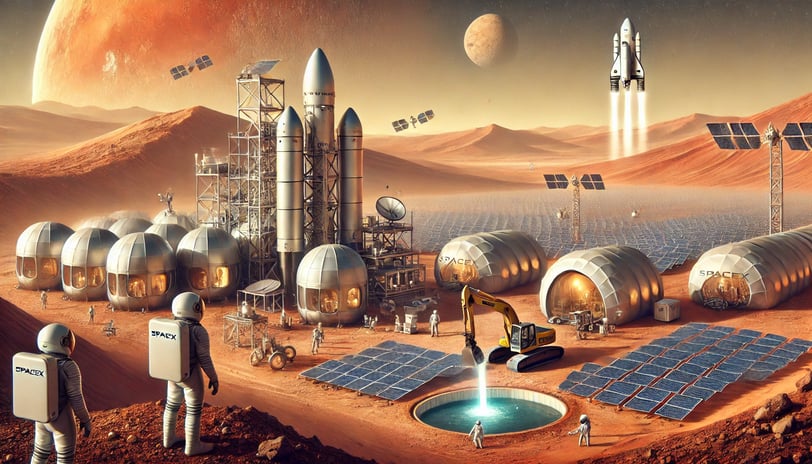The Discovery of Liquid Water on Mars and Its Impact on the Exploration of the Red Planet
The finding of liquid water on Mars represents one of the most significant breakthroughs in space exploration. Since the first observations of the Red Planet, scientists have suspected the presence of water at some point in its history. However, only recently have concrete pieces of evidence been obtained regarding the existence of underground reservoirs of liquid water, located beneath the polar ice layers. This discovery has major implications for the search for extraterrestrial life as well as for the potential human colonization of the planet.
2/13/20252 min read


How Water on Mars Facilitates Human Exploration
The presence of liquid water greatly enhances the feasibility of exploring and possibly colonizing Mars. Water is an essential resource for human survival and can be used for:
Hydration and Life Support: Provides astronauts with a local source of drinkable water, reducing the need to transport large amounts from Earth.
Oxygen Production: Water can be split into its constituent elements through electrolysis, generating breathable oxygen for settlers.
Rocket Fuel: Hydrogen and oxygen extracted from water can be used as propellants for return missions or further space exploration.
Food Cultivation: Agricultural systems on Mars would require water to enable food production within controlled environments.
Technologies for Mars Colonization
The colonization of Mars requires a series of technological advancements that are already under development:
Sustainable Habitats: Inflatable modules, underground shelters, and 3D-printed structures using local materials (such as Martian regolith) are among the studied options.
Energy Production: Solar panels and compact nuclear reactors will provide the necessary electricity to sustain habitats.
Local Resource Utilization (ISRU - In-Situ Resource Utilization): Utilizing Martian natural resources, such as frozen water and minerals, will reduce dependence on supplies sent from Earth.
Reusable Spacecraft: SpaceX, led by Elon Musk, is developing the Starship rocket, designed to transport large cargo loads and crew to Mars efficiently.
Robotics and Artificial Intelligence: Before human arrival, robots will construct essential infrastructure to ensure the safety of the first settlers.
How Will We Get to Mars?
Missions to Mars require well-planned strategies. Some approaches include:
High-Capacity Rockets: The SpaceX Starship and NASA projects such as the SLS (Space Launch System) can transport large payloads and astronauts to the planet.
Advanced Propulsion: Nuclear and ion propulsion technologies could reduce travel time from six months to approximately 90 days.
Intermediate Stations: Lunar bases may serve as support hubs for Mars missions, reducing costs and increasing efficiency.
Atmospheric Modifications: Terraforming Mars is a futuristic concept, but studies indicate it might be possible to gradually warm the planet and make its atmosphere more habitable over centuries.
The Future of Martian Exploration
With the discovery of liquid water and technological advancements, Mars is becoming an increasingly feasible goal for humanity. Exploring the planet could help us understand more about the origin of life, develop new technologies, and ensure a future where humanity becomes a multi-planetary species. The journey to Mars is only beginning, and the coming decades promise revolutions in how we explore the universe.
Explore
Discover diverse topics in one convenient hub.
Connect
Learn
contact@mindstormblog.com
© 2025. All rights reserved.


